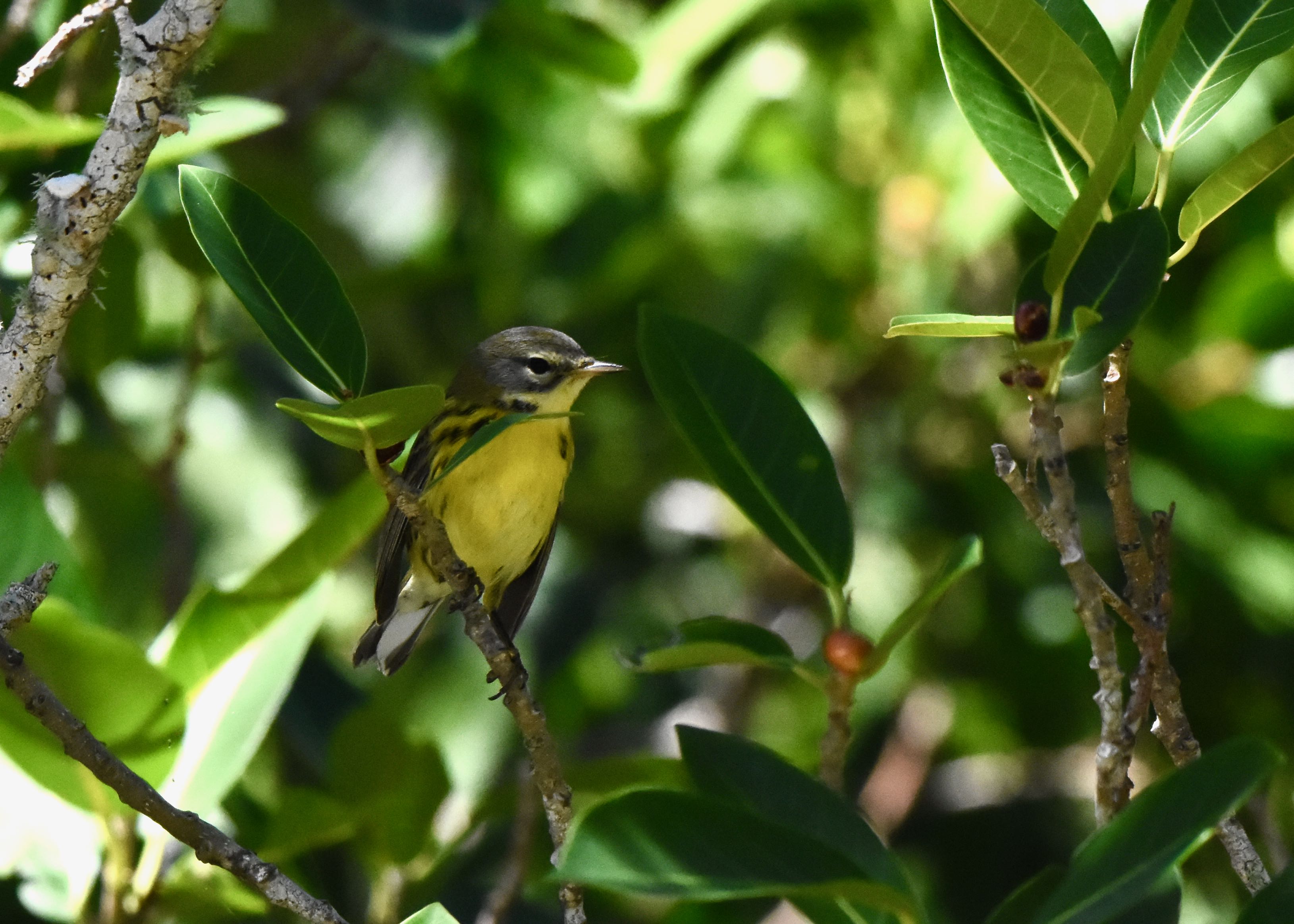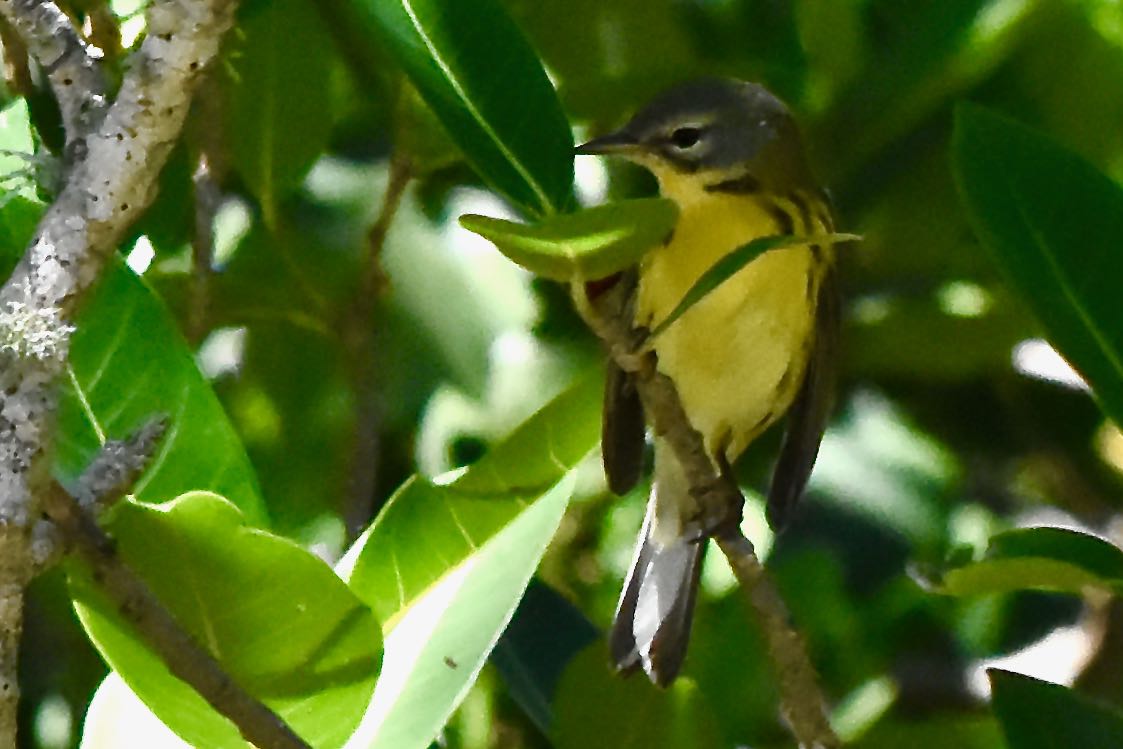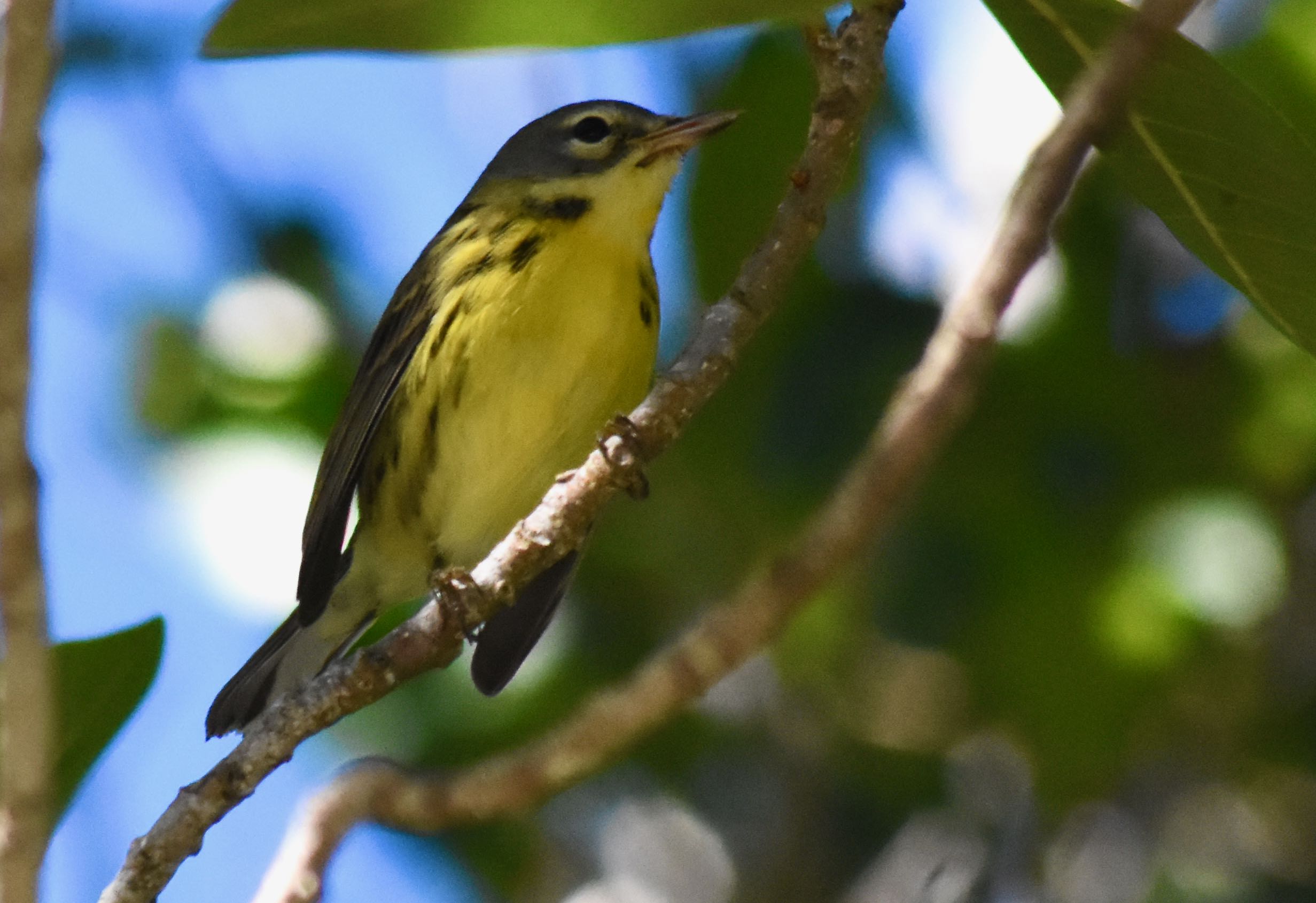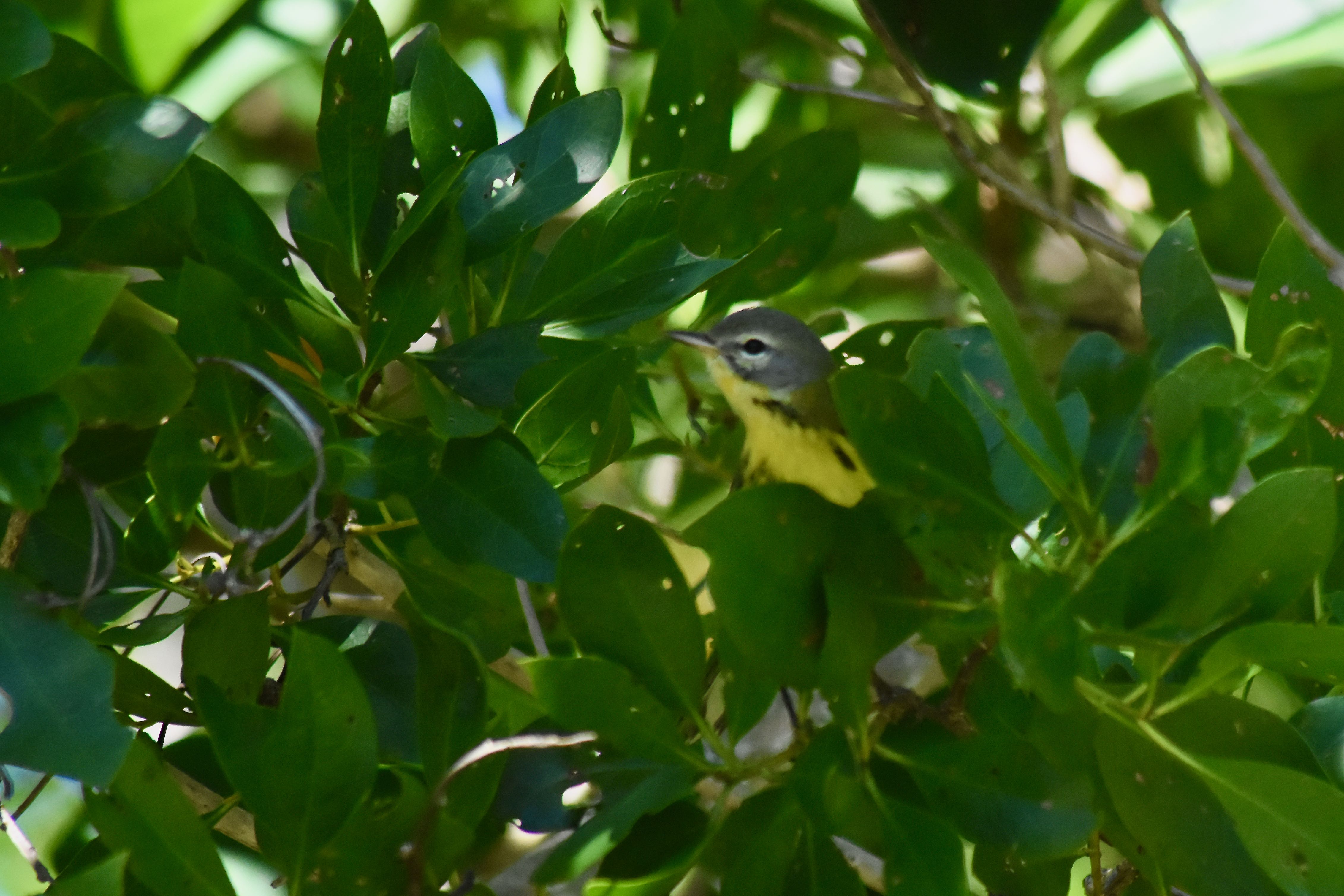
Pine Warbler, photographed at J.N. "Ding" Darling National Wildlife Refuge, Sanabel, Lee County, in Oct. 2016
Pine warblers, Setophaga pinus, stands out for two reasons: its name fits perfectly with its favorite habitat, and it’s one of the few warblers that can be found year-round in South Florida. In fact year-round throughout the state.
And one more thing: Florida even has its own pine warbler subspecies.
Pine warblers are fairly large as warblers go, and are found throughout most of the eastern United States at one time or another. It is a migratory bird, but it also has a substantial stay-at-home population concentrated in the southeastern U.S., including Florida. If you look at range maps for pine warblers you’ll see the year-round territory roughly corresponds to places where great longleaf pine forests once dominated the landscape.
During the spring and summer breeding season, pine warblers are found almost exclusively in open pine woods and mixed hardwood and pine forests. In migration and in their winter refuges, they become less picky about their surroundings, taking to orchards, thickets and the edges of woods.
Pine warblers go about five to five-and-a-half inches long, with wingspans between seven-and-a-half to nine inches. Males are predominantly yellow, mixed in with grays on the head, back and breast, creating an almost olive look. The wings are a mix of blacks and grays with two white wing bars. They have yellowish eye rings that are “broken” in two places, looking like two semi-circles, one under and one above each eye. The tail is black and gray and has a notched appearance. All in all, it’s not the brightest-colored bird. Females are duller in color.
Their range includes most of the eastern U.S. and adjacent parts of southern Canada. In the north, pine warblers are migratory, making the jaunt south in late summer and early fall, heading back north in early spring. Florida has both a resident population and a winter population. Residents are divided into two subspecies, S p pinus, found in the Panhandle, and S p florida, found in the Peninsula. Confirmed sightings or probable sightings of nesting pine warblers have been found in every Florida county save Broward, according to a Florida Fish and Wildlife Conservation Commission survey done in 2003. Migrators arrive in September through November and head north in March. Breeding season for resident pine warblers begins in late March. Florida is as far south as pine warblers migrate, which also distinguishes them from many other warbler species.
During the spring and summer, the menu for pine warblers is largely insects that they pick out of pine bark or off the needles, but they also eat a substantial amount of nuts, particularly pine nuts, which also sets them apart from most warblers. Fruits and berries also are part of their diet.
Pine warblers nest high in pine trees, typically on the outer portions of branches, concealed by clusters of cones and needles. Females build the nest, which is a deep cup made of weeds, grasses, strips of bark, pine needles (of course), bits of spider web and lined with feathers.
Clutches are three to five eggs, typically four, which require 10 days of incubation before hatching. The FWC puts incubation at 12 to 14 days. Both parents share sitting duties; both also feed their offspring. Both Audubon and Cornell University say pine warblers leave the nest at 10 days; FWC puts the time for fledging at 12 days. Their population is considered stable or slightly increasing.
Pine warblers used to be known scientifically as Dendroica pinus; They are members of Parulidae, the wood warbler family.
Links for Pine Warbler



